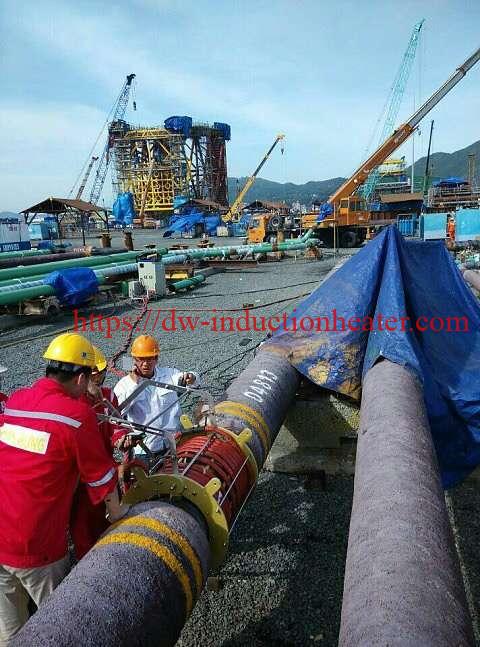
Curing coating of pipeline using induction heating involves a process where heat is generated directly in the pipe wall or the coating material by an electromagnetic field. This method is used to cure epoxy, powder coatings, or other types of coatings that require heat to set and harden properly.
 Here’s an overview of how the process generally works:
Here’s an overview of how the process generally works:
Preparation: The pipeline surface is prepared for coating. This may involve cleaning and potentially applying a primer or undercoat depending on the coating system’s requirements.
Coating Application: The coating is applied to the pipeline. This might be done by spraying, brushing, or another method suitable for the coating material and the pipe.
Induction Coil Setup: After the coating application, induction coils are placed around the pipeline. These coils are part of an induction heating system that includes a power source and control unit.
Heating Process: The induction heating system is activated. An alternating current passes through the induction coil, creating a varying magnetic field that induces eddy currents in the conductive pipe material.
Curing: The eddy currents generate heat due to the electrical resistance of the pipe material. This heat is transferred to the coating, bringing it up to the required temperature for curing. The temperature and duration of heating depend on the type of coating used and the manufacturer’s specifications.
Monitoring and Control: The temperature of the pipe and coating is carefully monitored, often with temperature sensors or infrared cameras, to ensure even heating and to prevent overheating, which could damage the coating or the pipe. The induction heating system is regulated to maintain the necessary curing temperature for the specified time.
Cooling: After the curing time has elapsed, the induction heating is turned off, and the pipeline is allowed to cool down. This may be a controlled process to avoid thermal shock or any adverse effects on the coating integrity.
Inspection: Once the pipeline has cooled, the coating is inspected to ensure it has cured properly. Inspection methods may include visual checks, dry film thickness measurements, adhesion testing, and holiday detection to ensure there are no defects or discontinuities in the coating.
Induction heating for curing coatings on pipelines offers several advantages:
Speed: Induction heating can cure coatings much faster than traditional methods like oven curing or air drying.
Control: The process provides precise control over the heating temperature and rate, leading to a uniform cure of the coating.
Energy Efficiency: Induction heating is often more energy-efficient than other heating methods because the heat is generated directly in the material.
Safety: This method minimizes the risk of fire and explosion since there are no open flames or hot surfaces.
Induction heating is particularly useful in field joint coating applications where the pipeline sections are welded together in the field and the coating at the joint needs to be cured quickly to maintain the integrity of the pipeline’s protective system.
https://dw-inductionheater.com/how-to-cure-coating-of-pipeline-with-induction-heating.html?feed_id=234914&_unique_id=65db4a67e6db6
